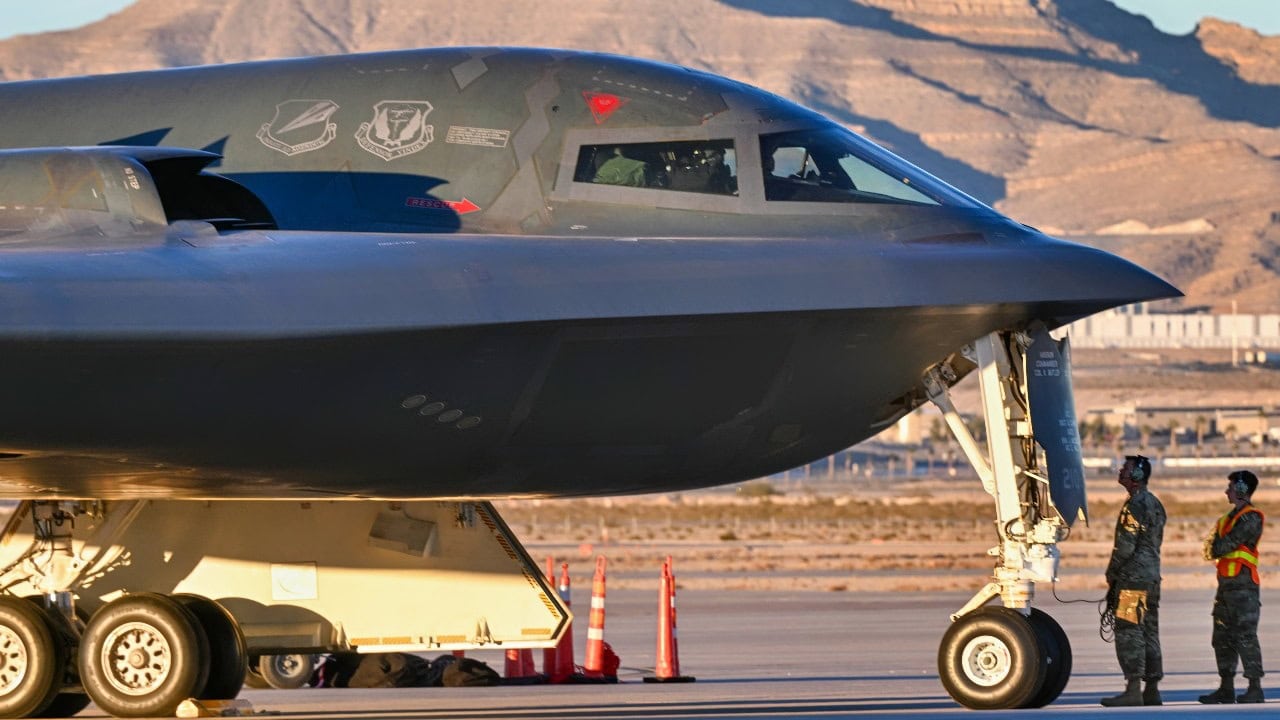Summary and Key Points: The deployment of B-2 stealth bombers to Diego Garcia places them within striking distance of Iran, signaling a strong deterrent message amid ongoing Houthi attacks supported by Tehran.
-Equipped with enhanced stealth and targeting capabilities, the B-2 can bypass Iran’s air defenses, potentially conducting precision strikes on high-value targets or disabling Iranian defenses.
-A Pentagon report underscores substantial Iranian arms smuggling to the Houthis, directly linking Tehran to attacks on U.S. and commercial ships in the Red Sea.
-The presence of B-2s serves as a warning that continued aggression could trigger limited retaliatory strikes, escalating into larger operations if necessary.
B-2 Bomber Attacks on Iran or Houthis Coming Soon?
The massing of B-2 stealth attack bombers in Diego Garcia is quite significant. It brings high-altitude bombing attack possibilities within easy striking range of the Middle East, a scenario some speculate could be a precursor to a surprise strike on Iran.
While the Trump administration is not likely to simply attack Iran with B-2s unprovoked, the President has been clear that Iran will be held accountable for its direct support of Houthi attacks on US warships in the Red Sea.
B-2 Bombers vs. Iran and the Houthis
There is a long and documented history of Iran providing weapons and financial support to Houthi rebels. This Yemen-based insurgent group has been attacking US and commercial shipping in the Red Sea for several years following the start of the Israeli-Hamas war.
During the Biden administration, the Pentagon’s policy was to, at times, attack Houthi launchers with air strikes but primarily use defensive force to track and intercept Houthi drones and missiles fired at US ships. Ship-fired US Navy interceptor missiles, deck-mounted guns, and fighter-jet-launched air-to-air weapons all successfully destroyed incoming Houthi missiles, preventing an actual hit on US warships. Several commercial ships, however, were hit by Houthi attacks, and US Navy sailors helped rescue crew members on several occasions.
At the very least, the movement of B-2s to within easy striking range of Iran sends a strong and unambiguous deterrence message that, indeed, the Trump administration is quite serious about its intent to hold Iran responsible for supporting Houthi attacks.
The Iranian support for Houthis is well documented in a significant 2024 research report published by the Pentagon’s Defense Intelligence Agency called “Seized at Sea: Iranian Weapons Smuggled to the Houthis.” The report specifies and provides photographic documentation of many Iranian weapons being deliberately smuggled to the Houthis.
B-2 Attacks on Iran?
There are several potential war scenarios where the US might send B-2s to attack Iran. As extremely stealthy high-altitude bombers, B-2s are designed to fly undetected above Iranian air defenses and use precision weaponry to destroy specific targets from the air.
As a broadband stealth platform, the B-2 is intended to elude low-frequency surveillance radar and high-frequency engagement radar so that enemy radar and defenses have no idea that an attacking plane is ever there.
Therefore, B-2s can target a series of limited strikes to hit several high-value targets or launch the beginning of a massive air attack campaign. Given their altitude and stealth, B-2s would likely be among the first air attack assets to strike Iran. B-2s can open up an “air corridor” for less stealthy aircraft by destroying air defenses within a specific envelope of air space.
Iran operates some Russian-built air defense systems, such as S-400s, yet it is unclear whether they would be positioned to see, track, and hit a B-2. Russian air defenses increasingly use multi-node digital networking technology, and RF sensors can operate at longer ranges and a greater number of frequencies.
However, it may not be clear just how updated and modernized Iranian air defenses are, as they may not be at all capable of detecting US B-2s. If some kind of detection were possible, Iranian air defenses would be even less likely to succeed in engaging or actually hitting B-2s.
The ability of Iran to hit B-2s has likely decreased substantially in recent years, given that the Air Force has implemented a series of significant upgrades to its fleet of 20 B-2s to improve stealth and lethality and to elude ground-based air defense radar systems.
The B-2 has been upgraded with digital targeting and moving map technology connected to advanced sensors to help crews know the air defenses’ location so that they can be eluded or simply avoided by a chosen flight path. The upgrades, which are called B-2 display modernization, began years ago as a sensor program called the Defensive Management System. The effort appears to have substantially improved a B-2’s ability to thwart and elude detection.
Therefore, should Houthi attacks continue, it’s conceivable that the President might order a limited series of B-2 strikes to send a message that Iran will be held accountable.
The strikes could function as a warning that a massive air attack campaign could follow a small initial attack should the Houthis not stop their attacks.
About the Author: Kris Osborn
Kris Osborn is Military Technology Editor of 19FortyFive and the President of Warrior Maven – Center for Military Modernization. Osborn previously served at the Pentagon as a highly qualified expert in the Office of the Assistant Secretary of the Army—Acquisition, Logistics & Technology. Osborn has also worked as an anchor and on-air military specialist at national TV networks. He has appeared as a guest military expert on Fox News, MSNBC, The Military Channel, and The History Channel. He also has a Masters Degree in Comparative Literature from Columbia University.

